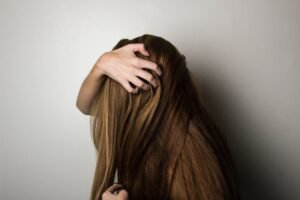“Elegance in Diversity: A Deep Dive into the Kaleidoscope of hair style Pakistan”

hair style
Introduction
In Pakistan, the world of hair style is as diverse and vibrant as the nation’s rich cultural tapestry. From traditional and culturally rooted styles to contemporary and global trends, Pakistani hairstyles offer a fascinating insight into the country’s ever-evolving beauty and fashion landscape. In this comprehensive exploration of hair fashion in Pakistan, we will delve into the history, regional variations, and the influence of culture and society on the diverse array of hairstyles that grace the heads of this South Asian nation.
Historical Roots of Pakistani hair style
To understand the plethora of hairstyles in Pakistan, it is essential to examine their historical origins. Throughout its history, Pakistan has been shaped by various civilizations and empires, each leaving a unique mark on its culture, including hairstyles.
- Mughal Influence: The Mughal Empire, which ruled the Indian subcontinent, including present-day Pakistan, introduced a sense of grandeur and refinement to hairstyles. Elaborate updos, adorned with precious jewels and pearls, were a hallmark of Mughal royal court fashion. While such opulence is rare in contemporary Pakistan, the influence of Mughal aesthetics can still be observed in special occasion hairstyles.

- Islamic Traditions: Islamic practices and beliefs have also played a significant role in shaping hairstyles in Pakistan. Modesty is highly valued in Islamic culture, and many Pakistani women choose to cover their hair with a headscarf or a hijab, making it a key element of their overall appearance.
Regional Diversity in hair style
Pakistan is a country known for its regional diversity, and this is reflected in the wide range of hairstyles that can be seen across the nation. Each region showcases its unique culture and traditions, often influencing hairstyles.
-
Punjab:
- Patiala Shahi Pagg: Men in Punjab, particularly in the Patiala region, are often seen wearing the Patiala Shahi Pagg, a distinctive turban style that varies in size and intricacy. The turban serves both functional and cultural purposes.
- Bridal Hair Buns: Punjabi brides often opt for high, intricate hair buns adorned with flowers and ornamental hairpins. These buns are an essential part of traditional bridal attire and are created with meticulous attention to detail.
-
Sindh:
- Sindhi Topi: In Sindh, men and women both often wear the Sindhi Topi, a colorful traditional cap, which is often paired with intricate braided hairstyles. The braids are accessorized with colorful threads and beads, adding a touch of cultural elegance.
-
Khyber Pakhtunkhwa (KPK):
- Long Beards: In Khyber Pakhtunkhwa, many men prefer to grow long beards, a cultural and religious practice associated with their Pashtun identity. These beards are a symbol of masculinity and honor.
- Flowing Hairstyles: Both men and women in KPK often opt for flowing, uncut hair. These flowing locks are a source of pride and are sometimes adorned with intricate hairpins.
-
Balochistan:
- Loose, Flowing Hair: The people of Balochistan have a strong attachment to their culture and often sport long, loose hair. Women in the region may use colorful scarves to keep their hair in place, creating a distinctive style.
-
Karachi and Urban Centers:
- Modern and Diverse Styles: In urban centers like Karachi, modern and diverse hairstyles are popular. Layered haircuts, pixie cuts, and other contemporary styles are commonly seen, reflecting the cosmopolitan and fast-paced nature of these cities.
Changing Trends in Pakistani Hairstyles
In recent years, the influence of the global fashion industry and the advent of social media have led to changing trends in Pakistani hairstyles.
- Layered Haircuts: Among urban women, layered haircuts have gained popularity for their versatility and modern appeal. Layers add volume and texture to the hair, making it a popular choice for those looking for a stylish yet manageable look.
- Pixie Cuts: Short hairstyles like the pixie cut have become fashionable among Pakistani women seeking a bold and edgy look. These cuts are not only trendy but also practical in Pakistan’s hot and humid climate.
- Bridal Hairstyles: Bridal hairstyles continue to be a vibrant part of Pakistan’s fashion culture. Brides from various regions showcase unique styles, often featuring intricate updos, floral adornments, and traditional headpieces.
- Cultural Influence: Cultural and religious traditions continue to play a significant role in shaping hairstyles in Pakistan. Haircare practices vary, with many people using natural oils like coconut and almond to maintain their hair’s health and shine.
The Role of Haircare Products
The popularity of various hairstyles in Pakistan has led to the emergence of a thriving haircare and styling product market. Pakistani consumers have access to a wide range of shampoos, conditioners, hair oils, and styling products to maintain and enhance their hair.
Conclusion
Pakistani hairstyles offer a captivating glimpse into the nation’s rich cultural heritage, historical influences, regional diversity, and modern fashion trends. From traditional braids and buns to contemporary pixie cuts and layered hairstyles, Pakistan celebrates a wide spectrum of styles that cater to individual preferences and cultural expressions.
As Pakistan continues to evolve, so too will its hairstyles, reflecting the ever-changing world of beauty and self-expression in this culturally diverse South Asian nation. The hairstyles of Pakistan stand as a testament to the resilience of tradition and the allure of modernity, embracing the best of both worlds in the realm of fashion and self-expression.
One Response
Every weekend i used too go to see this website,
for the reason that i ish for enjoyment, since
this this web site conations genuinely fastidious funny stuff too. https://www.Waste-ndc.pro/community/profile/tressa79906983/